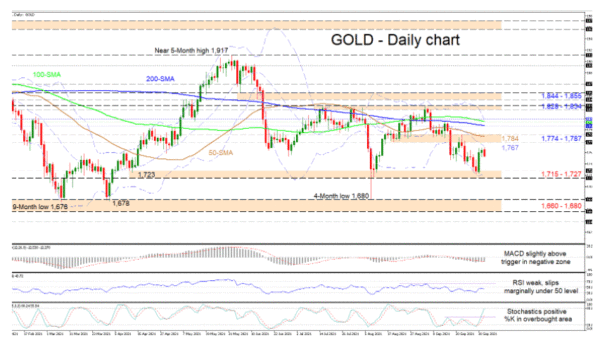Gold’s recent bullish pressures have been muted around the mid-Bollinger band at 1,767 and downward forces are keeping the bearish outlook in play. The trendless simple moving averages (SMAs) are not clearly endorsing a definitive direction, but their marginal dipping indicates a slight preference in the price to adopt a downward trajectory.
The short-term oscillators are conveying mixed signals in directional impetus. The MACD, in the negative region, has nudged a tad above its red trigger line, while the faltering RSI is struggling to push into bullish territory. The stochastic oscillator continues to promote bullish price action and has yet to confirm that sellers are gaining an advantage.
If downside defences keep buyers at bay, the price may dive to test the initial support band of 1,715-1,727, reinforced by the lower Bollinger band. Should selling interest intensify, the price may sink to challenge the support foundation of 1,660-1,680, which has held since April 2020.
If buyers manage to retake the reins, prompt upside friction could emanate from the mid-Bollinger band at 1,767 before buyers face the resistance section of 1,774-1,787. Piloting over the 50-day SMA and the 1,787 high, the bulls may encounter a zone of resistance between the 200-day SMA at 1,801 and the upper Bollinger band at 1,812. Surpassing all SMAs, the pair may target the resistance ceiling of 1,828-1,834. Conquering this too could cheer buyers to then propel towards the 1,844-1,855 border.
Summarizing, in the short-term timeframe, gold is exhibiting a slight neutral-to-bearish bias. It appears bearish forces are gaining a lead but a break either below 1,715 or above 1,834 would be needed for a stronger directional price path to evolve.













